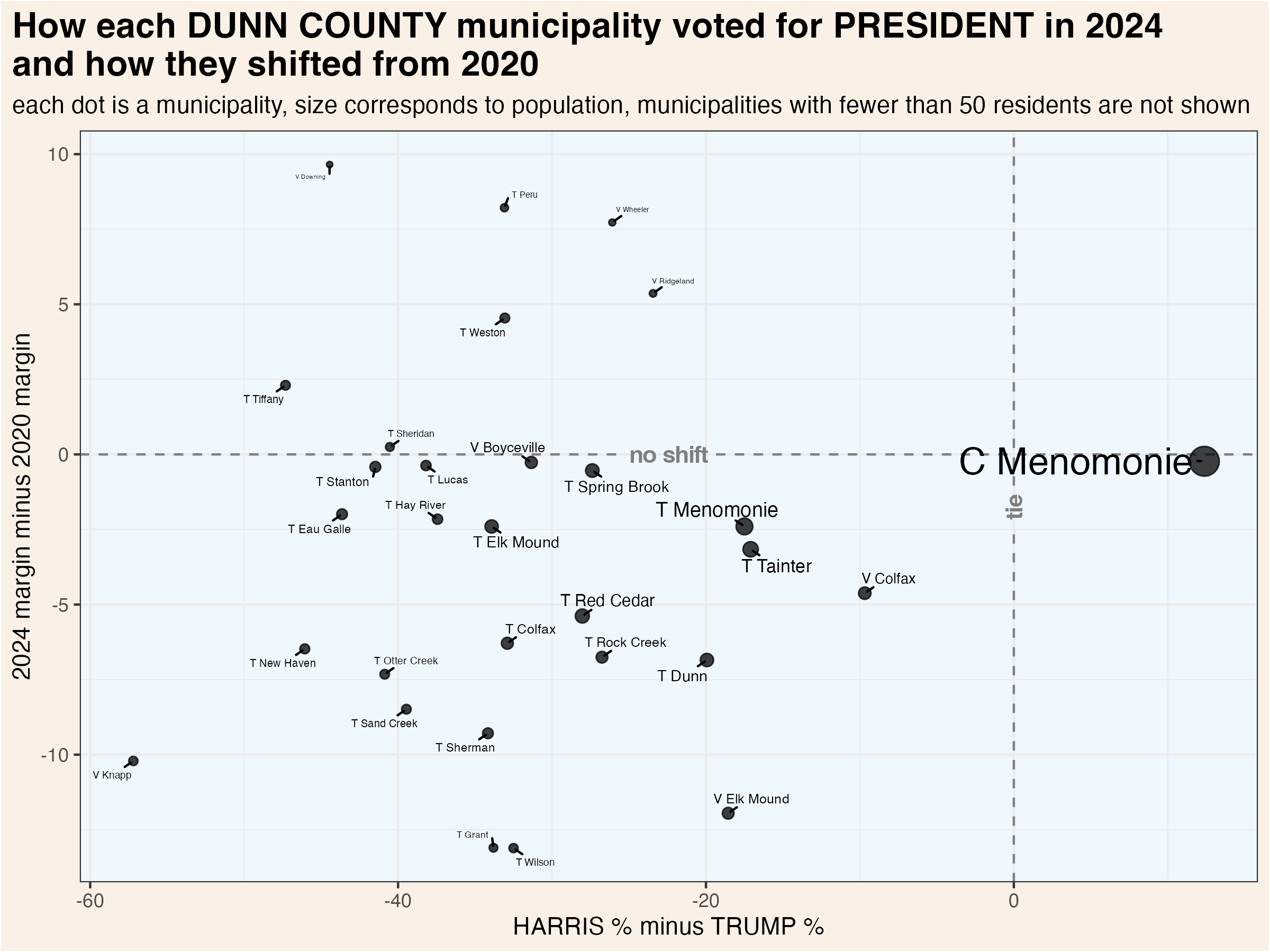
19 Dunn
Dunn County (pop. 45,000) is located in the heart of northwestern Wisconsin, about a 75 minute drive west of the Twin Cities. Its population is more white and a bit younger than the state average, but average incomes and educational attainment or similar to Wisconsin overall. Politically, the county shifted from majority Democratic to majority Republican during the Tea Party wave around 2010. Republicans have continued to win most elections since then; athough, Tammy Baldwin narrowly carried Dunn in her 2018 reelection campaign.
19.1 Demographics

19.2 County Election Results

Click each column name to sort its values.
19.3 Municipality Election Results
About 37% of the county lives in the City of Menomonie, which is home to UW-Stout and is also the most Democratic-leaning community in the county. A few of the other municipalities, like the village of Colfax, are often electorally competitive, but most communities lean solidly Republican.
This map shows the location of each municipality in the county, as it existed in 2022.

These dot plots show the most recent election results in each municipality.



To more clearly illustrate recent changes in municipality voting trends, these scatterplots compare the most recent vote for president and senator with the shift from that office’s previous election.


These maps show show every election result since 2000 in each municipality.



Click each column name to sort its values.
19.4 Supreme Court Election Results
Wisconsin’s Supreme Court has 7 justices, each of whom are elected to 10 year terms in statewide elections held in April. State law prohibits more than one Supreme Court election from being held in a single year. If a seat becomes vacant, the governor appoints a replacement who serves until the next year in which no court election is already scheduled. If more than two candidates achieve ballot access, a nonpartisan, top-two primary is held in February.
Court elections are formally nonpartisan, but candidates are usually supported by either liberals or conservatives. In recent years, it has become common for the Democratic and Republican parties to endorse and actively campaign on behalf of favored judicial candidates. The liberal and conservative labels indicated in the following graphs and tables are based on widely recognized tendencies, not any formal affiliation.
19.4.1 County Election Results
This graphic compares how presidential, gubernatorial, and court elections have trended over the past quarter century. Click the “Table” tab to see detailed results for the Supreme Court races.

19.4.2 Municipality Election Results
The following table shows the results of each Supreme Court election by municipality. The graphic visualizes the shifts over the past three court elections.
